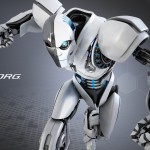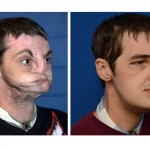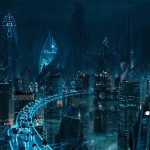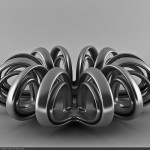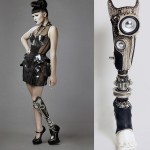Thesis statement:
While vastly extending productivity, enhancing humans’ capability and raising the standards of living, technology has been constantly changing the way we live to a boundary that if surpassed, could plague humanity with class struggles, civil conflicts and possibly overhaul the entire existence of human-beings.
Collected images and inspiration:
(In the folder)
Link: http://www.youtube.com/watch?v=lSGBwUEcM6c “Blade Runner” who uses prosthetic legs to compete with ‘proper’ athletes and even surpasses them in athletic ability.
Link: http://www.behance.net/gallery/STYLEFRAMES-NY-TITLE-SEQUENCE/9076851 An implementation of future New York with stylish art direction.
Blade Runner (1982) the Movie
Cloud Atlas (2012) movie.
Brief description of the research:
One of the common problems of arguments on posthumanism is that the assumptions of “human values” and “happiness”, are not clearly defined. The movie “Blade Runner” perfectly illustrates this ambiguity. The story of the movie sets on 2019, when a number of genetically engineered organic robots called “replicants” are manufactured by Tyrell Corporations and a number of “mega-corporations” around the worlds. Because the use of these robots is banned on Earth, replicants are forced to work on “off-world” colonies. Those who defy the ban will be hunted down by a group of police called “Blade Runner”. The movie showed a lot of existed problems accompanied with technologies such as dominance of corrupt corporations and excessive surveillance. It also challenged our assumption of what it means to be humans, and whether these replicants should be considered equal to humans.
In the same way, Cloud Atlas also portrayed the ambiguity on the definition of human and the problems that could arise. Sonmi~451, a genetically engineered robot is not considered a human-being. She and her ‘species’ are enslaved on the promise that they would be free after serving their term, only to later be recycled into other robots. Without a clear definition of human-beings, post-humanism becomes a dirty politics game, a tool for the elites and big corporations to exploit, disguise and make profits for themselves.
However, in this project, I decide to focus on something I called ‘boundary’. From my observation, humans’ development and technologies have been a naïve process of pursuing profits and short-term benefits. While being a very productive force for the society, these technological advancements already step into controversial field such as human-cloning or genetic modification. By advancing too naively and too fast, we already did something without fully perceiving its consequences. I do believe that all technological advancements should be limited by a well-defined moral ‘boundary’. One such boundary, for example, might be that genetic modification should only be used for cancer treatment, not physical enhancement. By clearly defining this boundary, we set a right direction for technological developments and this will help increase the material well-being of society.
Quote:
“Humanism may be coming to an end as humanism transforms itself into something one must helplessly call posthumanism” – Ihab Hassan, theorist
Project description:
I will do some keyshot renders for this sculpture set.







